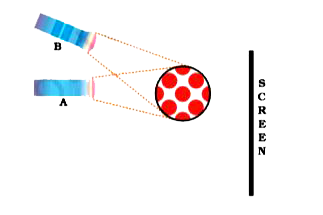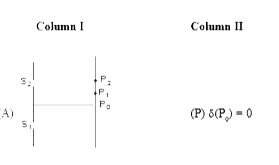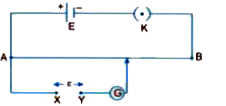A sheet of plywood, a piece of muslin cloth and that of a transparent glass, all of the same size and shape were placed at A one by one in the arrangement shown in Fig. 11.12. Will the shadow be formed in each case. If yes, how will the shadow on the screen be different in each case? Give reasons for your answer.

Step by step video & image solution for A sheet of plywood, a piece of muslin cloth and that of a transparent glass, all of the same size and shape were placed at A one by one in the arrangement shown in Fig. 11.12. Will the shadow be formed in each case. If yes, how will the shadow on the screen be different in each case? Give reasons for your answer. by Physics experts to help you in doubts & scoring excellent marks in Class 6 exams.
Updated on:21/07/2023Topper's Solved these Questions
- LIGHTBOOK - NCERT EXEMPLARCHAPTER - LIGHTEXERCISE - SHORT ANSWER QUESTIONS
10 Videos
- FUN WITH MAGNETSBOOK - NCERT EXEMPLARCHAPTER - FUN WITH MAGNETSEXERCISE - LONG ANSWER QUESTIONS
7 Videos
- MOTION AND MEASUREMENT OF DISTANCES BOOK - NCERT EXEMPLARCHAPTER - MOTION AND MEASUREMENT OF DISTANCES EXERCISE - LONG ANSWER QUESTIONS
4 Videos
Similar Questions
A torch is placed at two different positions A and B, one by one, as shown in Fig. 11.9.

The shape of the shadow obtained in two positions is shown in Fig. 11.10

Match the position of the torch and shape of the shadow of the ball.
View SolutionThree incandescent bulbs of 100W each are connected in series in an electric circuit. In another circuit, another set of three bulbs of the same wattage are connected in parallel to the same source.
(a) Will the bulbs in the two circuits glow with the same brightness ? Justify your answer.
(b) Now let one bulb in both circuits get fused. Will the rest of the bulbs continue to glow in each circuit ? Give reason.
(a) In a household electric circuits, different appliances are connected in parallel to one another. Give two reasons for the same.
(b) An electrican puts a fuse of rating 5A in that part of domestic electrical circuit in which electrical heater of rating 1.5kW,220V is operating. What iis likely to happen in this case and why ? What change, if any, needs to be made ?
View Solution
Knowledge Check
Column I shows four situations of standard Young’s double slit arrangement with the screen placed far away from the slits S1 and S2 . In each of these cases S1P0=S2P0,S1P1−S2P1=λ/4 and S1P2−S2P2=λ/3, where λ is the wavelength of the light used. In the cases B,C and D, a transparent sheet of refractive index μ and thickness t is pasted on slit S1 . The thicknesses of the sheets are different in different cases. The phase difference between the light waves reaching a point P on the screen from the two slits is denoted by δ(P) and the intensity by I(P). Match each situation given in Column I with the statement(s) in Column II valid for that situation.
A B
B C
C D
D
Study the following information carefully and answer the questions given below:
An organisation wants to recruit Management Trainees. Following are the criteria for such recruitment. The candidate mustbe-
(A) a graduate in any discipline with at least 65 percent marks.
(B) above 24 years and not above 30 years of age as on 01.11.2004.
(C) having a postgraduate degree/ diploma in Management or have completed ICWA/CA/CS with at least 55 percent marks.
(D) having an experience of 0-2 years.
(E) ready to be on probation for one year.
If a candidate satisfies all the criteria
EXCEPT-
(i) at (C) above, but is an engineer with minimum 70 percent marks his/ her case is to be referred to AGM- PA.
(ii) at (D) above, but has secured at least 70 percent marks in post graduation his/her case is to be referred to the GM-PA.
Based on the above criteria and information provided below, make a decision in each case. You are not to assume anything. If the data given are not enough to take a decision mark your answer as 'data inadequate'. These cases are given to you as on 31.10.2004.
Karan Ambani is a Science graduate with 70 percent marks. He completed his post graduation in Business Management with 60 percent marks in the year 2001 and has been working since then. He is ready to be on probation of one year.Aif the candidate is not to be appointed.Bif the case is to be referred to the Managing DirectorCif the candidate is to be appointed.Dif the case is to be referred to the Direct-Finance.
For the potentiometer circuit shown in the given figure, points X and Y represent the two terminals of an unknown emf ε . A student observed that when the jockey is moved from the end A to the end B of the potentiometer wire, the direction of the deflection in the galvanometer remains in the same direction. What may be the two possible faults in the circuit that could result in this observations ? If the galvanometer deflection at the end B is (i) more, (ii) less, than that at the end A which of the two faults," listed above, would be there in the circuit ? Give reasons in support of your answer in each case.

View Solution(i) Rohit claims to have obtained an image twice the size of object with a concave lens. Is he correct? Give reason for your answer.
(ii) Where should an object be placed in case of a convex lens to form an image of same size as of the object? Show with the help of ray diagram the position and the nature of the image formed.
(iii) With teh help of ray diagram, illustrate the change in position, nature and size of the image formed if the convex lens in case of (ii) is replaced by concave lens of same focal length.
View SolutionA farmer harvests his crop and expresses his harvest in three different ways.
(a) I have harvested 10 quintals of wheat.
(b) I have harvested 10 quintals of wheat today in one acre of land.
(c) I have harvested 10 quintals of wheat in one acre of land, 6 months after sowing.
Do the above statements mean one and the same thing. If your answer is ‘yes', give reasons. And if your answer is ’no’ explain the meaning of each expression.
View SolutionTwo objects of masses m1 and m2 having the same size are dropped simultaneously from heights h1andh2 respectively. Find out the ratio of time they would take in reaching the ground. Will this ratio remain the same if (i) one of the objects is hollow and the other one is solid and (ii) both of them are hollow, size remaining the same in each case. give reason.
View SolutionThe elements Li, Na and K, each having one valence electron, are in period 2, 3 and 4 respectively of modern periodic table.
(a) In which group of the periodic table should they be ?
(b) Which one of them is least reactive ?
(c) Which one of them has the largest atomic radius ? Give reason to justify your answer in each case.
View SolutionDevendra was told that the elements P,Q and R belong to group 2 , group 14 and group 17, respectivelhy, of the long form of periodic table. Based on this information, he was asked to answer the following questions:
(a) What is the valency of (i) element P (ii) element Q and (iii) element R? Give reasons for your answer.
(b) What is nature of oxide of (i) element P (ii) element Q and (iii) element R? Give reasons for your answer.
(c) Give one example each of (i) element P (ii) element Q and (iii) element R.
(d) Name three elements which occur in the same group as element R but exist in three different physical states at room temperature.
(e) What values are displayed by Devendra in answering these question?
View Solution
